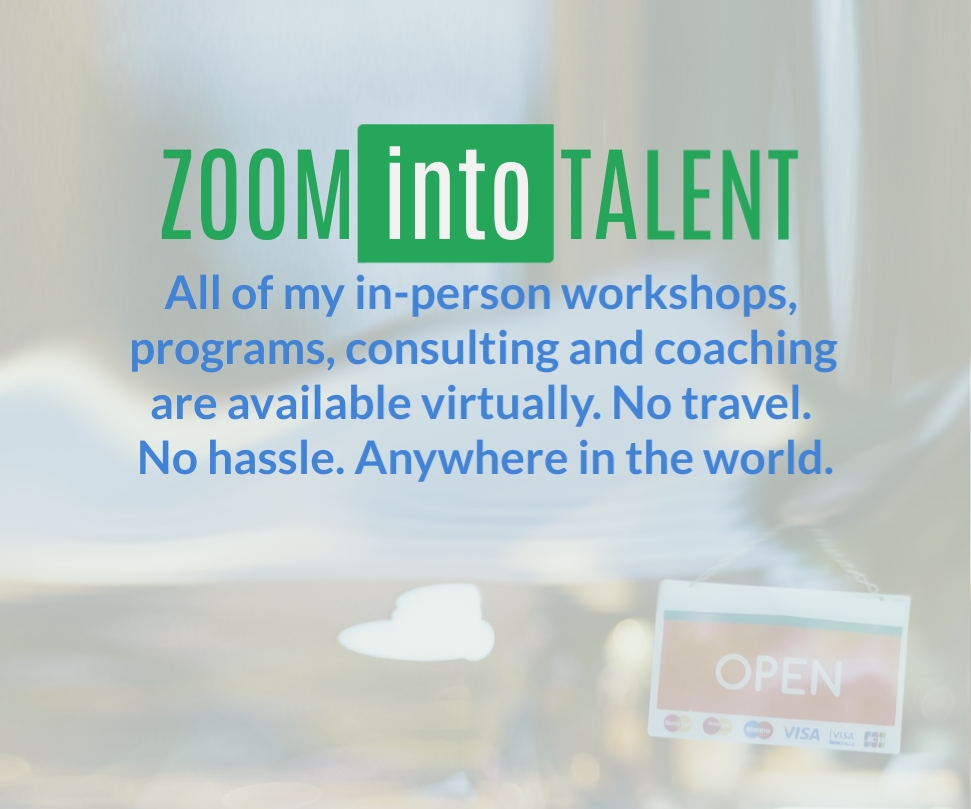Who Do we Serve?
Who do we serve? “I’m here for the learner,” Janice, a management trainer told us emphatically.
It was Fall in 2018 and I was facilitating a professional development program for some seasoned trainers in the mid-west. There were about 12 people in the group who had between 8 and 20 years’ experience as trainers and we were in a room with lovely large windows overlooking a park. “Everything I do must serve the learner’s interest,” Janice added.
 Janice saw being “learner-centered” as a core outworking of serving the learner. She was grounded in all the adult learning principles, read all the emerging studies in neuro science to learn how people cope with emotions in the classroom, and was an avid consumer of books on motivation and trust. She designed her workshops to be very much about the experience and such a safe space to learn.
Janice saw being “learner-centered” as a core outworking of serving the learner. She was grounded in all the adult learning principles, read all the emerging studies in neuro science to learn how people cope with emotions in the classroom, and was an avid consumer of books on motivation and trust. She designed her workshops to be very much about the experience and such a safe space to learn.
Andrea, however, offered a different perspective. “I’m here for the organization,” she offered thoughtfully. “Sure, I want learners to have a good experience, but I’m not their therapist and I wasn’t hired to give them a fun experience. My CEO has to tell her shareholders that the money she’s spending on my salary is helping the salesforce move more product.” She’d been teaching sales for 10 years.
To stay up-to-date, Andrea monitored sales figures, ROI of her development interventions and looked out for how her workshops, microlearning content, and influence as an informal coach moved the needle in her part of the organization. That trust and motivation stuff wasn’t unimportant. It’s just that focusing on objectives and mapping them all the way to top line business objectives, was the priority.
Neither rejected the other’s position outright. Janice understood the importance of organizational goals, it’s just that her interest was in people. And Andrea understood the value of good learning experiences, she just felt they weren’t much point unless business goals were being met. However, their position will influence decisions they make as talent professionals.
In my experience, running workshops and speaking at conferences about learning around the globe, most trainers tend to fall into one of those camps. Some are more convinced about it than others. But their values influence how they approach their work and make decisions as learning professionals. For example, what should a trainer do when a participant says he doesn’t want to learn about something in the curriculum? If the learner thinks it’s truly irrelevant, the learner-centric trainer may feel inclined to skip it. Whereas, the organization-centric trainer may feel inclined to make sure it’s covered. Knowing who we serve helps us make important decisions when facilitating.
 Follow the Money
Follow the Money
So who does the trainer server – the learner or the organization? My first instinct is to simply to follow the money. Or put another way, ask who writes the check. At first glance, this person is our client – without them we wouldn’t be hired. This was made clear when the CEO of a company I once worked with asked my boss, “What am I getting for the $10 million I’m spending on your training department?” The implication was, could the CEO create more value by spending that budget on something else?
When a boss writes a check s/he wants to know s/he’s not just throwing cash in the air. The boss doesn’t want to waste the shareholders’/taxpayers’/donors’ money. To be responsible, the boss asks what value that money will create for the organization? And how will it help the organization achieve its objectives? A good boss will ask this of every person and function within the organization.
After all, an organization doesn’t have a legal department just for fun. It’s funded to minimize the organization’s exposure to risk. And the marketing department is funded to expand the customer base. And for us? Talent specialists are paid to help the organization’s staff work better and achieve all those objectives.
Training in a government agency may be to help staff operate new software to extend services. In a commercial organization it might be to reduce workplace accidents. For a non-profit, help staff provide social needs to the community. So, if we serve the organization, does that mean the we don’t serve the learner?
It’s Really a Tension
A few years ago, a workshop participant suggested that serving the organization rather than the learner, was morally offensive. “It’s not what I signed up for,” he said. “Such a position implies I don’t care about learners’ needs – only what the organization can leach out of the employee.”
Strong words. And while many trainers sympathize with such sentiments, I believe that neither position can be successful on its own. Truly transformative trainers serve organizations by serving learners. They put both the learner and organization at the heart of their practice, deftly managing the tension between the two.
If we’re not learner centered, we’ll be much slower – indeed some would say ineffective – than when we do. And if we serve the learner but not the organization, the value of our role will be questioned as people who ask what value their investment us creates for the organization other than provide feel good experiences. Yes, I’m exercising a wee bit of hyperbole here to make a point, but you know what I’m saying. To be organizationally centric, we need to be learner centered. We can’t have one without the other.
Is This Really Important?
You may be scratching your head thinking, what’s the big deal? Is Jonathan just getting philosophical? In my workshops for both seasoned and new trainers, a lot of folks feel they should belong in one camp or the other. Maybe this is not your experience. However, I see it a lot and I don’t think it’s helpful.
 Today’s workplace is experiencing significant changes. Robots and artificial intelligence will soon affect just about every aspect of work life. Staff turnover is increasing, and the gig economy is growing, making organizations more dispersed with executives demanding more agile workforces that will increasingly need to learn a lot more skills and knowledge, fast.
Today’s workplace is experiencing significant changes. Robots and artificial intelligence will soon affect just about every aspect of work life. Staff turnover is increasing, and the gig economy is growing, making organizations more dispersed with executives demanding more agile workforces that will increasingly need to learn a lot more skills and knowledge, fast.
The role of learning and talent development in many organizations is very much up for grabs because organizations need specialists to shepherd their leaders and teams through these tough transitions. Talent specialists who understand the dynamics of organizations, as well as people and how they perform, will be critical for helping organizations navigate the messy nature of the future, supporting people through the uncertainty it brings, helping them re-skill and survive.
Unless we clearly see ourselves as serving both learners and organizations, we may find ourselves irrelevant.
Managing the Tension.
In the world of smaller teams, lower budgets and increased demands, how do we manage this tension? There are many ways – here are just a few. You may be doing these things already or deploying other methods to make it work in your organization.
Being Organizationally centered
First, understand your organization’s or client’s business goals. Is it to increase efficiency or revenue, decrease workplace harassment or turnover? Is it extending further services to certain communities or improving staff morale? This information is available in business plans, the company website and slide decks used in town halls.
Second, learn to communicate these objectives and what they mean for the people you support. Ensure you communicate them clearly in language people are familiar with. (That is, no jargon or words that belong in MBA essays. Be real and concrete.)
Third, translate these goals into performance, describing how it looks. What does increased efficiency look like in terms of new skills, resources and expectations from managers? What does new software mean in terms of skills, which role will perform each task and which computers will have software installed on them. New supply chain? What does it mean for people working on it, timing, geography, and quality control? The more concrete we are, the more helpful we will be to both learners and the organization.
Third, how will you as a trainer or talent professional be supporting employees or other people supporting employees perform these new skills or processes? (This question is not how will you deliver content but how will you ensure they can do these things well, when their training has finished?) Can you explain why your techniques are the best option? Can you explain how success will be measured?

Click the image above for an infographic with 6 steps to balancing learner needs and organizational objectives.
Being Learner Centered
First, find out how ready people are for change. If people aren’t ready for change, asking them to change is a tough call. If they’re not ready, find out how you can help them, or their teams prepare.
Second, what will be the most efficient way to help employees learn new skills, processes or products? Dig into your knowledge of learning science and evidence backed methods that are proven to help people grow.
Third, ask how you can empower learners to build their future. Can you give them control over their learning such as when, where and at what speed they devote to learning?
Fourth, what level of skills and experience will each learner bring to the class? How can you ensure your learning methods build on their existing skills? How can you tailor the learning – whether it be in the classroom or some pieces of microlearning content to their stage of skill?
Fifth, given that learning happens best through deliberate practice, how can you ensure they do this both in the class and when they go back to the job? And what sorts of resources or networks can you provide after the learning, to help them grow and develop that skill?
It’s a Balancing Act
The future for learning and development is both exciting and scary. To be successful we need to get the right balance between serving the organization and the learner.









Comments are closed.